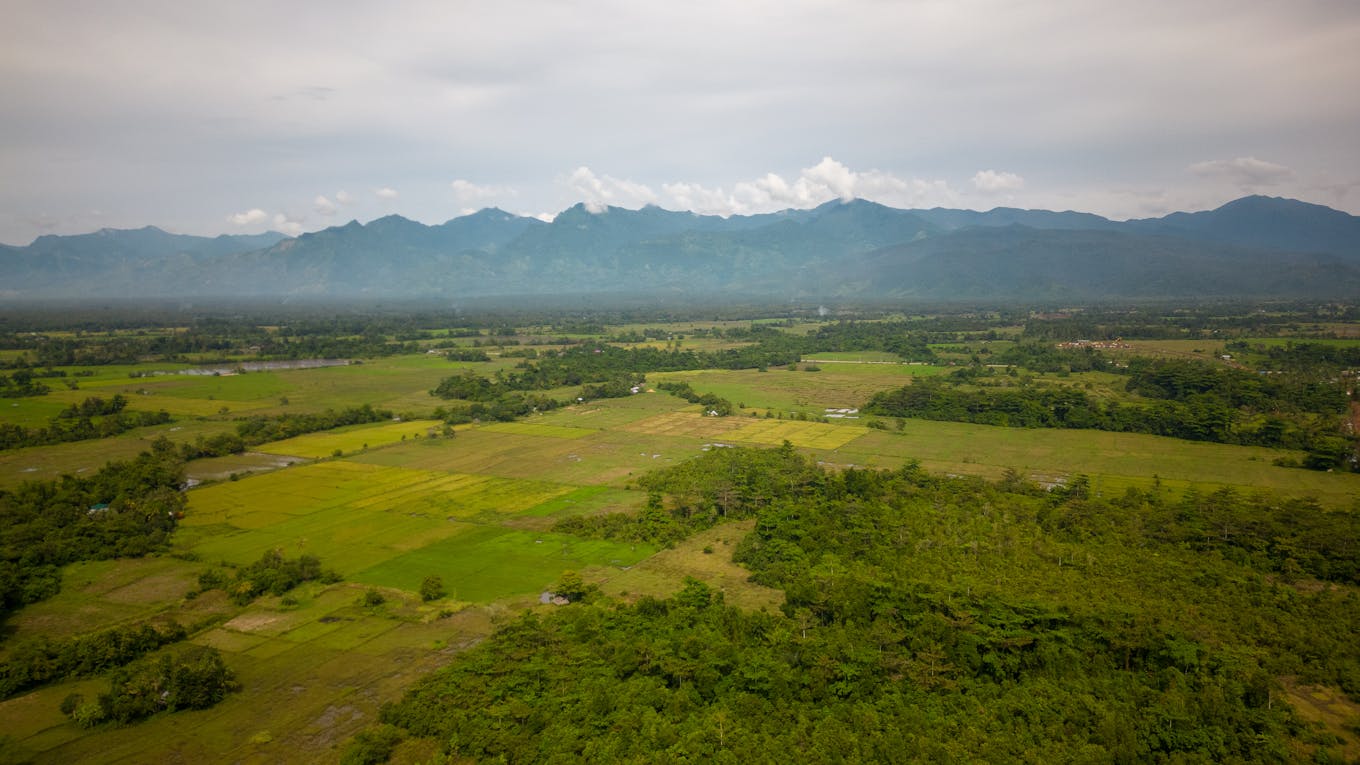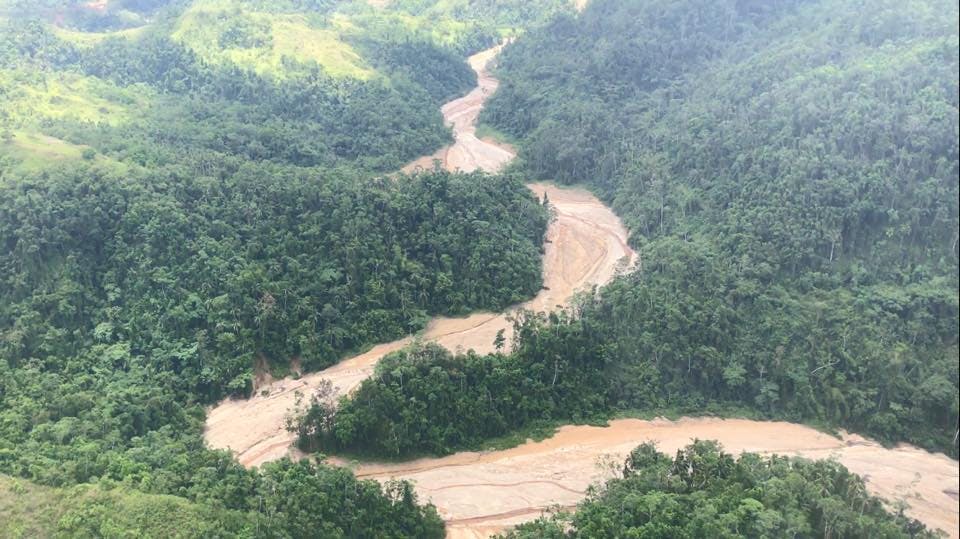Petitioners protesting mining operations in the town of Brooke’s Point, Palawan, registered a win on 15 August when the Philippine Supreme Court made a move that required the environment department and two private firms involved in commercial exploration to provide explanation and evidence to dispel concerns about the potential environmental impacts of their project, by issuing a special writ.
To continue reading, subscribe to Eco‑Business.
There's something for everyone. We offer a range of subscription plans.
- Access our stories and receive our Insights Weekly newsletter with the free EB Member plan.
- Unlock unlimited access to our content and archive with EB Circle.
- Publish your content with EB Premium.
Known as the writ of kalikasan, or a ‘writ of nature’, the legal remedy is one unique to Philippine law which provides for the protection of one’s right to “a balanced and healthy ecology in accordance with the rhythm and harmony of nature”, and accorded as a constitutional right to the people of the Philippines. It featuring in the recent high-profile Brooke’s Point case has raised interest in the role of judiciary mechanisms in the protection of nature.
An anti-mining war has been going on in Brooke’s Point – seen as the Philippines’ last frontier for hundreds of flora and fauna species – for decades, with mining exploration activities escalating in recent years.
In February this year, locals set up a human barricade to block the operations of Ipilan Nickel Corporation (INC), a subsidiary of the Philippines’ second-largest nickel miner Global Ferronickel Holdings, in their town; a legal petition was filed by the Indigenous cultural communities (ICCs) in various barangays or villages who charge that these private firms’ unlawful mining operations will affect their livelihoods and destroy their hometowns.
In a notice made public on 16 August, the Supreme Court explained its decision to issue the writ of kalikasan against the Department of Environment and Natural Resources (DENR), the department’s Mines and Geosciences Bureau (MGB) as well as mining firms INC and Celestial Nickel Mining Exploration Corp, citing potential “irreparable environmental damage” that the mining operations can cause, and how these will put residents of Brooke’s Point “in peril”.

Mount Mantalingahan, the highest peak in Palawan province and considered sacred by the Indigenous peoples, is known for its high floral and faunal diversity and endemism. It is also a rich source of nickel. Image: Firdaus Firlany / Eco-Business
It highlighted signs of extreme flooding and contamination of fishing areas in the nearby mountain ranges, which it said has prejudiced the life, health, and property of the locals.
It has also demanded for the government agencies and the mining firms to provide evidence that would address the related concerns within 10 days.
“For Palawan, the issuance of the writ of kalikasan is a groundbreaking precedent,” said Grizelda Mayo-Anda, executive director of non-profit Environmental Legal Assistance Center (ELAC) which provides free legal advice for IPs and marginalised communities in Palawan.
Since the writ can only be issued if the magnitude of environmental impact covers a minimum of two cities or two provinces, Palawan has never found protection under this legal remedy, Mayo-Anda explained. The archipelagic province is made up only of small municipalities.
“The Supreme Court apparently appreciated the importance of the Mount Mantalingahan landscape which covers five municipalities,” added Mayo-Anda, referring to the highest mountain in Palawan, considered sacred to the Indigenous peoples. In the decision, the high court had seemingly compared the municipalities in the protected area to cities, she said.
Eco-Business looks into how the legal mechanism came about and what such a writ means for the protection of nature, especially when commercial pursuits clashes with public interest.
Why was the writ of kalikasan written into Philippine law?
The Philippines’ writ of kalikasan is the first of its kind by a court or tribunal, and the only one currently in the world, according to Gregorio Bueta, an environmental lawyer who teaches natural resources and environmental law and international environment and climate change law at the Ateneo School of Law.
It came about as a result of efforts led by the Supreme Court to make the Philippine justice system, particularly the court, more effective in addressing environment and climate issues plaguing the country.
“It wasn’t just one event that triggered it but rather the continuous destruction and deterioration of the environment which the courts saw was becoming more alarming than before,” he said.
In 2009, the Philippine courts formed a team of experts which drafted the Rules of Procedure for Environmental Cases. Stakeholders were consulted in several rounds throughout the country. The following year, the provision for the writ of kalikasan, was written by the Supreme Court as one of the remedies as part of the country’s laws for environmental protection.

The 1996 Marcopper mine disaster left the Boac River in Marinduque a “dead river”. It took the Supreme Court 15 years to issue a writ of kalikasan against Placer Dome, the parent corporation of Marcopper Mining Company. To this day, the case is still pending trial. Image: Gina Lopez PH
What are past instances when the writ of kalikasan was issued?
Due to its past cases of environmental mismanagement, the controversial mining sector has been hardest hit by the writ.
In the Philippines, there is a strong lobby against the industry led by local governments, legislators, advocacy groups and even the Catholic Church.
In 2016, the high court issued the writ against five mining companies, which allegedly destroyed the ecosystem in the province of Zambales in the Central Luzon region and its neighboring municipalities. In the same year, however, the court reversed the order against one of the firms LNL Archipelago Minerals Inc, a metallic ore miner then accused of violating mining and forestry laws.
As the top supplier of nickel ore to China, the archipelago’s extractives sector has been reinvigorated in recent years by President Rodrigo Duterte’s lifting of a nine-year moratorium on new mining permits.
Last month, the Supreme Court issued a writ of kalikasan against another nickel firm Altai Philippines Mining Corp, amid violent protests from locals of Sibuyan Island in Romblon, who claimed that extraction of nickel ore will disrupt the island’s intact ecosystems.
Rodne Galicha, executive director of Living Laudato Si Philippines, an environmental advocacy group affiliated with the Catholic Church that has been supporting the locals of Sibuyan, said his group has no official information on whether Altai has responded to the Supreme Court’s requests.
What the group knows is that Altai has been pushed to engage the local communities and launch “social acceptability” campaigns in order to meet compliance requirements for exploration and obtain environmental permits for its operations to go ahead, said Galicha.
Are there ‘success cases’ where nature is protected?
Mayo-Anda told Eco-Business that so far there have been no successful writs of kalikasan issued against mining.
For example, a writ issued against the devastating Marcopper mining disaster of 1996 – one of the worst environmental incidents in Philippine history when a fracture in the drainage tunnel of a mining pit spilled toxic mine tailings that flooded villages and poisoned the Boac River – is still pending trial.
One writ which was successful was issued in the Bt eggplant case filed by environmental campaigner Greenpeace in 2016. Scientists carrying out field trials of genetically-engineered eggplants were ordered then to halt their research over concerns regarding plant biodiversity and human health. The trials were eventually banned.
The writ of kalikasan against the Palawan mines can be used as a precedent in future anti-mining campaigns and environmental cases in the island province, said Mayo-Anda, even as there are still uncertainties that remain. No temporary environmental protection order (TEPO) has been issued for this case.
Bueta believes that the Supreme Court’s move to issue a writ of kalikasan adds urgency to the locals’ cause of preventing environmental harm.
“This is not even a full blown trial yet, but the initial evidence presented by the petitioners has already given the impression to the justices that mining operations are extremely harmful,” Bueta said.
The issuance of the writ also prompts action by the private corporations, since it is legally-binding, and failure to comply would mean that they come into direct contempt of the court order, he added.
For now, the case is pending and only when the responses are in will the court decide if a TEPO will be issued, and a trial could follow.
INC, one of the mining firms, has acknowledged the writ of kalikasan. It told local media that it welcomes the case as “an opportunity to address and dispel recurring baseless allegations that have consistently been refuted by various governmental bodies”.
Read our special report to further understand how the search for energy transition metals such as nickel in the Philippines and wider Southeast Asia is affecting the environment and the livelihoods of people.
Want more Philippines ESG and sustainability news and views? Subscribe to our Eco-Business Philippines newsletter here.












